IndiaWilds Newsletter Vol. 9 Issue II
Of Oceans, Whales & Man
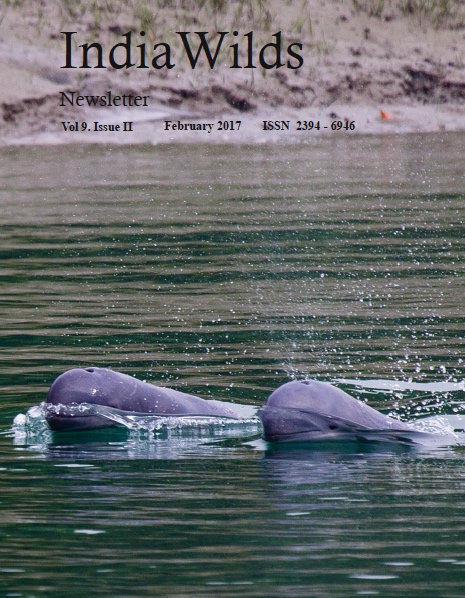 In one of the most shocking incidents in recent memory, about 400 Long-finned Pilot whales (Globicephala melas) got stranded on a beach in New Zealand’s Farewell Spit on the evening of 9th February, 2017 and by the next day morning 300 of them were dead. Experts and volunteers tried hard to refloat and 100 whales seem to have refloated and swam away. Cynics often dismiss such events by saying that such things do happen. More than 100 whales had died in the same place in February 2015.
In one of the most shocking incidents in recent memory, about 400 Long-finned Pilot whales (Globicephala melas) got stranded on a beach in New Zealand’s Farewell Spit on the evening of 9th February, 2017 and by the next day morning 300 of them were dead. Experts and volunteers tried hard to refloat and 100 whales seem to have refloated and swam away. Cynics often dismiss such events by saying that such things do happen. More than 100 whales had died in the same place in February 2015.
The Pilot whales breaching in New Zealand was the third worst in their history. In 1985, about 450 whales had breached in Auckland and in 1918 about a thousand were reported to have breached.
These whale breaching incidents are also not uncommon to India as around 100 short finned pilot whales (Globicephala macrorhynchus) had died in Tuticorin on the night of 11th January, 2016. In Tuticorin, when a group of fishermen had tried to push them away from the Kallamozhi beach, they moved to another beach 8 kms away near the Manapad fishing village and breached.
More than three hundred large mammals dying on a beach on a single day is not just a simple accident. Though many reasons are floated to explain the mystery of the whales breaching on the beach, some as esoteric as solar flares and tsunamis, the actual reason are not conclusively proved and demand our immediate attention because this also shows that all is not well with our Marine Ecosystem.
These Pilot whales are divided into two species. The long-finned Pilot whales (Globicephala melas) live in cold waters and the Short-finned Pilot whales (Globicephala macrorhynchus ) in warm waters. With global warming, our seas are getting warmer and now there are reports of the short-finned pilot whales moving to newer areas due to hot oceans and also reportedly mating with the Long-finned pilot whales.
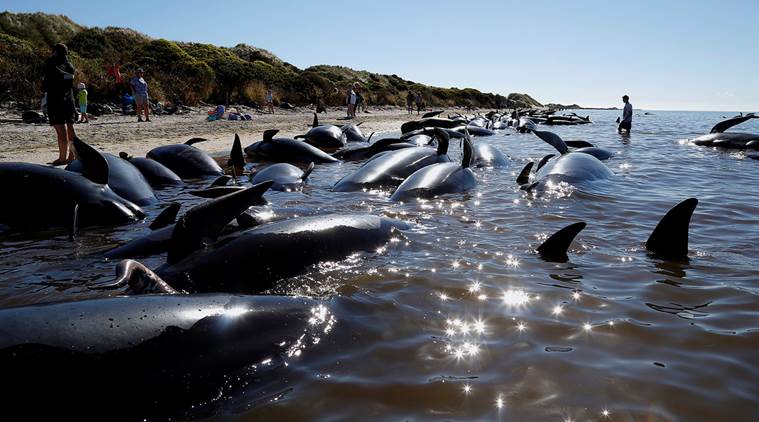
Volunteers try to guide some of the stranded pilot whales still alive back out to sea after one of the country’s largest recorded mass whale strandings, in Golden Bay, at the top of New Zealand’s South Island, February 11, 2017. Image Courtesy – Online media
The pilot whales have a very sensitive ear and depend on echolocation for detecting their food as well as finding their route, mates, communication etc. However, the ambient noise in the oceans have increased manifold since Industrial Revolution. And the impact would be similar to that of a bright flash light instantly flashed on a man’s eye while he is trying to find his route in the dark.
We humans mostly are acquainted with sounds traveling through air. The speed of sound in air is 343 meters per second. However, sound travels much faster in water than in air. Sound travels at a speed of 1484 meters/second in water. So any anthropogenic noise travels much faster in water and inundates whales and other creatures that depend on echolocation. The number of ships travelling in the seas and oceans, the aircraft flying over the oceans, Navies conducting experiments etc lead to a lot of noise pollution in the water.
Sound also travels faster in warm water. So due to global warming, as the temperature of our oceans rises, the man-made sounds travel more and create more problems for the whales and other Odontocetes who depend on echolocation. Though sound speed slows down when the water becomes colder, the speed of sound also increases with pressure. So in the Ocean in places where the depth is very high, like Mariana Trench which is estimated to be 10,994 meters, the sound waves refract towards the bottom where the sound speed is minimum and as the depth increases the sound speed increases and so the sound waves then again starts getting refracted upwards. So the sound waves get refracted up and down and it helps in the sound travelling deep into the ocean without losing much energy.
In an experiment conducted by National Oceanic and Atmospheric Administration and the Oregon State University, the researchers had lowered a specially designed hydrophone to 36000 feet deep in the Challenger Deep of Mariana Trench and found lot of noise of ships reaching to such depths. They also recorded the sounds of baleen whales as well as the sound of a storm passing over the water surface in that moment.
It is a stunning moment for mankind to realise that its unwanted noise also reaches the deepest and most primordial ecosystems, ruining its peace.
And it is not just peace that man has ruined.
Another study in Mariana Trench and in Kermadec Trench (Jamieson, A. J. et al. Bioaccumulation of persistent organic pollutants in the deepest ocean fauna. Nat. Ecol. Evol. 1, 0051 (2017) has found that our toxic wastes are now polluting the once pristine environment and also bio accumulating in the species inhabiting there. The researchers found PCBs(Polychlorinated biphenyls which are used as dielectric fluid) and PBDEs (Polybrominated diphenyl ethers, which are used as flame retardants) found in the bodies of endemic amphipods from the deepest of depths of Mariana Trench and Kermadec Trench. “Two endemic amphipods (Hirondellea dubia and Bathycallisoma schellenbergi) were sampled from the Kermadec between 7,227 and 10,000 m, and one (Hirondellea gigas) from the Mariana between 7,841 and 10,250 m.” It is shocking that the “Contaminant levels were considerably higher than documented for nearby regions of heavy industrialization, indicating bioaccumulation of anthropogenic contamination and inferring that these pollutants are pervasive across the world’s oceans and to full ocean depth.”
The PCBs and PBDEs known as persistent organic pollutants (POPs) got released into the environment either through leakage from landfills, industrial accidents, improper disposal or simply dumping into rivers ands seas which found their way into the deepest of our oceans as these POPs don’t get degraded easily.
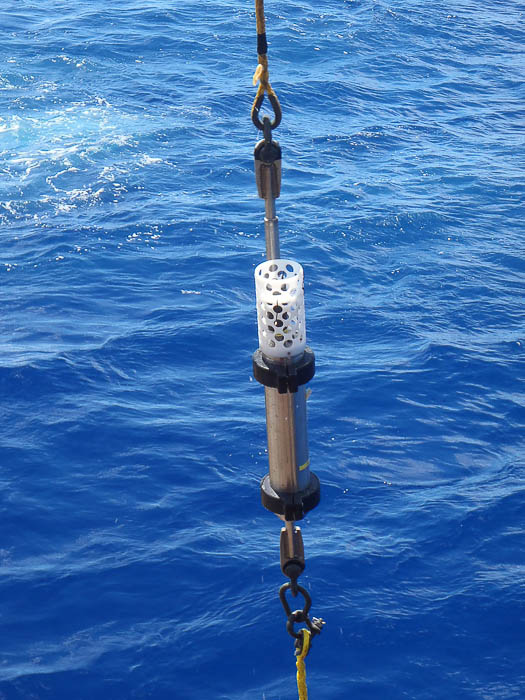
Deep-ocean Hydrophone with Titanium cashing being lowered to the sea floor from deck of USCG Cutter Sequoia at Mariana Trench.
Mariana Trench is so deep that it can comfortable drown the worlds tallest mountain Mount Everest which is 8848 meters and still have more than two kilometres of water above it. Similarly Kermadec Trench is 10,047 meters and can also comfortably drown Mount Everest. It was generally assumed that these places are pristine but now it seems these trenches are acting like wells and all our toxic wastes are depositing there. Sadly since these toxic wastes are now found in the amphipods.
At the bottom of the Marine Ecosystem the organic detritus and phytoplanktons occupy the first trophic level. The tiny zooplanktons which includes the amphipods feed on the phytoplanktons and they in turn are fed by fishes, squids, whales etc. So the POPs (Persistent organic pollutants) found in the amphipods from Mariana Trench and Kermadec Trench gets bio-accumulated in the predators that feed them and increases in concentration and toxicity due to biomagnification as you go up the trophic level.
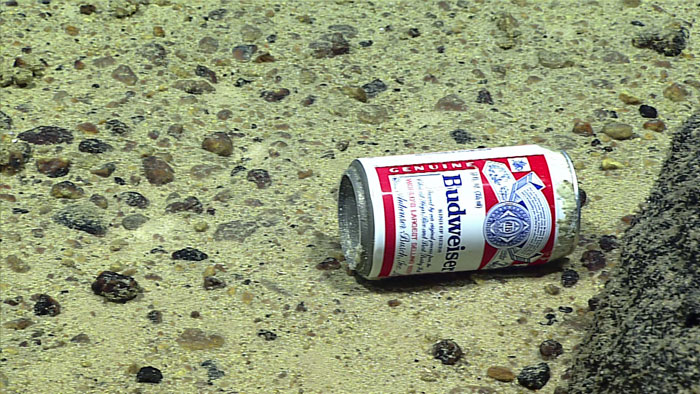
Beer Can found by the 3780 meters deep at Enigma Seamount in Mariana Trench. Photograph: NOOA office of Ocean Exploration
Apart from the whales, man is also a big consumer and hence these POPs get accumulated in our bodies. According to the report produced by Arctic Monitoring and Assessment Programme (Arctic Pollution Issues: A State of the Arctic Environment Report, 1997 (http://www.amap.no/documents/doc/arctic-pollution-issues-a-state-of-the-arctic-environment-report/67) the caribou feeding on toxic lichen in the Northwest Canada had 10 times more PCBs (Polychlorinated biphenyls) than the lichen and the wolves who predated on the carbou had 60 times more PCBs than the lichen.
So when you throw the waste, it not only comes back to hit you, but also hits you severely.
For a long time, the oceans used to be our favourite dumping ground. People used to mistakenly believe that our seas and oceans have enormous capacity to take our wastes. However, it is only now that we have come to understand our folly.
While feeding the whales also seem to inadvertently swallow large amounts of trash. Necropsy of 13 sperm whales stranded in North Sea coast in January and February 2016 in Schleswig-Holstein revealed that four of the 13 whales had large amounts of trash in their stomachs. These trash includes a 13 meter long and 1.2m wide net used in crab fishing, 70cm long car parts and other plastics. These facts were revealed in a press release issued by the Ministry of Energy, Agriculture, Environment and Rural Areas in Schleswig-Holstein. (http://www.nationalpark-wattenmeer.de/sh/misc/untersuchung-der-gestrandeten-pottwale-grosse-mengen-plastikmull-den-magen-gefunden)

13m long net used for crab fishing found inside stranded Sperm Whale body: Photograph: Ministry of Energy, Agriculture, Environment and Rural Areas in Schleswig-Holstein
Nearly a decade back USA discovered that you can’t escape from your garbage. If you throw your garbage, it comes back to strike you through the most unimagined manner. USA had been dumping old televisions, monitors and other e-waste in China. However, the enterprising Chinese converted the plastic parts from e-waste into dolls and exported back into USA. The dolls were found to contain toxic chemicals like lead, mercury, beryllium, cadmium etc present in the computers.
Waste is like bad karma. You can’t just simply dump it. We have to atone for our sins by spending time, energy and resources to safely dispose or recycle our wastes.
The PCBs are toxic to fish, causes spawning failure, developmental problems in humans, causes fatigue etc. The PBDEs and other POPs also cause endocrine disruption and impact the central nervous system, cause cancerous growth etc. The actual impact of the bioaccumulation of the POPs and biomagnification in all species is not known, however various studies have found linkages and have found that biomagnification is especially significant in food webs where the apex predator has high fat content.
A study titled “Morbilliviruses in aquatic mammals” (Barrett, T et. al, Veterinary Microbiology, May 1995) found “93% of long-finned pilot whales (Globicephala melas) which mass stranded between 1982 and 1993 were morbillivirus seropositive”. The largest Cetacean Mobillivirus (CeMV ) epizootic in 1990–1992 was associated with very high PCB concentrations as found in the study “Abnormally high polychlorinated biphenyl levels in striped dolphins (Stenella coeruleoalba) affected by the 1990-1992 Mediterranean epizootic”(Aguilar, A. Science of the Total Environment, 1994).
Another study “Cetacean Morbillivirus: current knowledge and future directions” (Van Bressem et al. Viruses, 2014) found “Classical CeMV-associated lesions include bronchointerstitial pneumonia, encephalitis, syncytia, and lymphoid depletion associated with immunosuppression. Cetaceans that survive the acute disease may develop fatal secondary infections and chronic encephalitis. Endemically infected, gregarious odontocetes probably serve as reservoirs and vectors. Transmission likely occurs through the inhalation of aerosolized virus but mother to fetus transmission was also reported.”
The bioaccumulation of the POPs and their high concentrations have the potential to impact a group of whales to behave abnormally due to disruption of the central nervous system and together with high levels of stress due to increased anthropophony may result in mass strandings. This can only be validated by long-term inter-disciplinary scientific studies on free-ranging whales. However, it would be pertinent to act immediately to save our Oceans and their wild denizens rather than simply wait for long-term studies to establish the linkages between all our thoughtless actions and catastrophic degeneration of our Marine Ecosystem. After all, the famous economist John Maynard Keynes had said “in the long run we all are dead”.
Obituary: TNA Perumal
The doyen of Pictorial Wildlife Photography Shri TNA Perumal is no more.
Master photographer Thanjavur Nateshacharya Ayyam Perumal was born in pre-independence India in 1932 and has breathed his last in Bangalore on 8th February, 2017.
Conservation News:
Sabarimala Airport gets in-principle approval
The Kerala Government cabinet has given an in-principle approval for setting up an airport near Sabarimala temple. KSIDC (Kerala State Industrial Development Centre) will conduct a feasibility study for the airport.
The previous UDF Government had decided to set up an airport at Aranmula which was opposed by the locals as well as the Parliamentary Standing Committee. The Chennai bench of the NGT (National Green Tribunal) had cancelled the environmental clearance granted to the Anamula airport project. Now the left front Government has decided to set up the airport at Erumeli which is about 45 kms from the Sabarimala temple.
Every year Lord Ayyappa Temple at Sabarimala gets about three crore pilgrims and tourists. Sabarimala is located in the Periyar Tiger Reserve in the Western Ghats and is an ecologically fragile area which is collapsing due to the huge pilgrim pressure.
Traditionally the journey was through the forests and used to be physically challenging. Devotees were asked to follow a strict diet regimen which was ecologically sound (http://www.indiawilds.com/diary/indiawilds-newsletter-vol-6-issue-ii/). These days however, the diet regimen and the rituals are observed in a more relaxed manner and the yatra is undertaken by a lot of tourists.
These days, the Government wants to make it easier for affluent tourists so that they can fly-in and fly-out of the Ayyappa temple. These kinds of “pop-darshan” have become popular in number of religious places and is a win-win situation for the affluent class as well as the tour operators.
As such the massive tourist influx has huge ecological impacts. The food and plastic waste thrown all around the tracks consume many lives of endangered wild animals. The human excrete due to people defecating in the open has led to transmission of antibiotics to other wild animals as well as polluting the fresh water streams and rivers.
Creating an airport won’t reduce the pressure of tourists. Rather it will increase it because a new class of people will start visiting the place, further increasing the ecological challenges. However, has the Government ever been concerned about environment?
Karnataka Government Allows Wild-boar killing
The Karnataka government has permitted killing of wild boars on the pretext of crop damage.
Giving in to the hunting lobby and the farmers, the Karnataka Government has now declared wild boars (Sus scrofa) as vermin and allowed their killing. This notification is valid till 13th January 2018.
Killing of wild boars is often resorted to in the past on the pretext of sudden surge in their populations. These orders are often seen as populist moves to satisfy a few villages living in and around forests. These are never done on the basis of any scientific study. The ecological impact of culling the prey species for carnivores is not studied before issuing these notifications.
A few months ago the Karnataka Government had allowed killing of wild boars in a few areas in and around Ramanagara. During every such notification, the officials term the wild boar population as huge and hence needs to be curtailed. However, no detailed population estimations have been done to back their claims.
Often the increase in numbers of prey species is due to the predator population plunging down. If poaching of few local predators like leopards, tigers, wolves etc is done, then immediately a void is created in the area and the prey species population can shoot up without their biological controls. In most of the areas the wolf populations have become decimated. Even it is difficult to sight jackals and hyenas who were earlier mostly abundant in the village sides.
The Government order is often used as a pretext to hunt for the pot though the bodies of the killed animals are supposed to be disposed off in the presence of forest officials.
Interventions of Man to selectively wipe out one species creates a massive ecological imbalance. Unfortunately, neither the Government nor the people are interested in the ecologically valid scientific practices.
Government doesn’t believe in Pollution data – announces own studies
The Union Government doesn’t believe in studies, which show deaths of large number of people in various cities in India due to air pollution. To refute the air pollution related deaths, the Government is commissioning its own studies. The Minister of State (IC) for Environment, Forests and Climate Change Shri Anil Madhav Dave has said that we should exercise caution in linking the deaths to air pollution. This study is to be commissioned by the Ministry of Health and Family Welfare.
The Minister has reiterated that the Government of India is taking all steps to combat pollution and referred to the recent announcement of the Graded Response Action Plan to address different levels of air pollution in National Capital Region graded action plan.
The minister said that the Government is closely monitoring the trend of various air pollutants across the country under the National Air Quality Monitoring Programme. The Monitoring network comprises manual stations spread over 300 cities in 29 States and 6 Union territories. Apart from manual stations, there are 54 Continuous Ambient Air Quality Monitoring Stations that cover 33 cities in 12 states. The monitoring network is being expanded to cover all metro cities and capital towns.
It may be pertinent to mention that during the peak smog period in Delhi in October/November 2016, the Delhi Pollution Control Committee (DPCC) had stopped showing the 24 hour average data. Given the sensitive nature of this data, the experts involved in the studies will have a tough time to stand up to pressure and give an accurate report.
Supreme Court Directs closure of Industries without effluent treatment plants
The Hon’ble Supreme Court of India in a welcome move has directed that all SPCBs should issue a common notice to industries whether they have installed PETPs (Primary Effluent Treatment Plants) and after three months any industry running without effluent treatment plants would be shut down. It directed all the pollution control boards to physically verify and shut down plants after three months if the units are running without treatment plants.
The SC bench comprising Justices D Y Chandrachud and S K Kaul and led by Chief Justice JS Khehar observed “States don’t worry about human lives. It is an important issue. If the country doesn’t act now, it can never be retrieved”. It further said that “if industrial units don’t have functional PETPs, then they will not be allowed to function anymore”.
The SC bench showing their seriousness on the issue has also directed the pollution control boards to direct the concerned electricity distribution companies or State Electricity Boards to cut power supply to the industries who have defaulted on setting up PETPs.
The SC has also directed that the environment secretaries of the states and the State Pollution Control Boards must implement this order. It also directed the SPCBs to upload online the data of the quality of effluents discharged into the rivers.
This order is the culmination of a case which started with a PIL (Public Interest Litigation) filed by an NGO Paryavaran Suraksha Samiti and was initially limited to the State of Gujarat. However, the SC increased the ambit and included other states. The SC had asked the states to file their response by the 16th of January. .
It would be pertinent to mention that most of our rivers have been ruined due to the untreated pollution discharged from industries into the rivers and waters in most of our major rivers are unfit for human consumption.
Equipment Discussions:
Canon Launches the EOS 77D, 800D & M6 cameras
Canon has announced two DSLRs and one mirrorless camera at one go.
Canon EOS 77D DSLR Camera:
Canon has announced the new EOS 77D DSLR camera and it sits just below the EOS 80D. It looks very similar to the EOS 80D. The EOS 77D has a newer Digic 7 processor and shares the same 45 point AF and DPAF of the EOS 80D. The max frame rate in still shooting mode is 1 fps slower ie 6fps vis-à-vis 7 fps of the 80D. The EOS 77D is said to have 5 axis in body stabilisation.
Salient features of Canon EOS 77D:
Sensor: APS-C sized (1.6x crop factor), 22.3×14.9mm, CMOS
Resolution: 24.2 Megapixel still images, 1080p video at 50/60 fps
Autofocus: Phase detection AF, 45 points all cross type.
Image Stabilisation: Digital 5-way image stabilisation in body. This is the first time Canon is introducing a digital stabilisation in camera body in a DSLR camera.
ISO: 100-25600, expandable to ISO 51200. The EOS 80D was limited to ISO 25600. This jump in low light ability in the EOS 77D over the 80D is due to its newer Digic 7 processor.
Shutter speed: 1/4000 – 30 seconds, bulb mode
Continuous shooting mode: upto 6 fps can record 190 frames in jpeg and 21 frames in raw.
Video: both in PAL/NTSC modes. Full HD ie 1920x1080p at 59.94fps in 60Mbps data rate in MP4 mode in H.264 codec. For 23.98 and 29.97fps, it records 1920×1080 in 30Mbps data rate in H.264 codec.
The video clip length is restricted to 29mins 59 seconds.
This camera, like all other recent DSLRs and Mirrorless cameras comes with Wi-Fi and NFC for quick file sharing with mobiles and other devices.
Size: 5.2 inch x 3.9 inch x 3 inch
Weight: 540gms
Canon EOS 800D
Canon EOS 800D is very similar to the EOS 77D, except it lacks a few bells and whistles of the 77D. The EOS 800D doesn’t have a top LCD and a rear quick control dial.
Canon EOS M6 Mirrorless Camera:
Canon has also introduced the M6 Mirrorless camera. It is 24.2 Megapixels CMOS sensor and the same Digic 7 processor as in the EOS 77D and EOS 800D. It also has the same 3 inch tilting touch screen LCD. It can shoot in Full HD at upto 60fps in NTSC and 50fps in PAL mode.
Its top speed stills shooting is 7fps. It can be increased to 9fps if AE lock mode is engaged.
Image Stabilisation: It comes with a in body 5 axis digital image stabilisation. This works well with Canon’s IS lenses.
ISO: 100-25600 comes as standard. It is expandable to ISO 51200.
Wi-Fi, NFC, Bluetooth is included in the camera for faster file sharing with connected devices.
The body only price is $779 US Dollars.
Sigma Announces 14mm f1.8 DG HSM Art lens
Sigma has announced four lenses at one go. The widest among the four lenses is the 14mm lens.
Sigma has announced a fast f1.8 14mm lens which it terms as worlds first and only f1.8 ultra wide angle lens. 14mm lenses mostly sport f2.8 aperture. So launch of a f1.8 aperture is a big breakthrough.
This 14mm f1.8 lens covers the 35mm full frame format. Anyone who has tried to shoot starry skies or moonlit landscapes at very high ISOs, this lens will come in very handy.
This lens is part of the ART series of lenses and is expected to be of good quality. Sigma is organising its lenses into Contemporary, Art and Sports categories.
There are three Low Dispersion glass elements (FLD) and four Super Low dispersion glass elements (SLD) in this lens. According to Sigma, this has helped in lowering the transverse chromatic aberration, good peripheral brightness and excellent centre to edge sharpness.
The front element is a 80mm dia aspherical glass element which is precision molded to lower the distortion. The flare and ghosting characteristics of this lens is said to be good due to the multi-layer coatings applied.
The firmware of this lens can be updated by an optionally available USB dock.
The lens is made of Thermally Stable Composite (TSC) material so that the lens doesn’t expand or contract in hot and cold conditions and give poor results. The lens has got AF with full time manual focus and the manual focus can simply be engaged by rotating the focus ring.
The aperture is from f1.8 to f16. As compared to the Sigma, the Canon’s 14mm f2.8 L II lens which retails for $2099 US dollars and has aperture from f2.8 to f22.
The Sigma 14mm f1.8 lens has a diaphragm comprising 9 blades for smooth circular bokeh as opposed to 6 blades of the Canon 14mm f2.8 L II USM.
The minimum focusing distance of the Sigma is 10.63 inches as opposed to 7.9 inches of the Canon 14mm f2.8 L II USM lens. It also has 16 elements bunched up in 11 groups vis-à-vis 14 elements of the Canon 14 f2.8 L II lens.
The Sigma 14mm f1.8 lens weighs a hefty 1170 grams and one needs to carefully decide whether to carry this or its competitor lens in a demanding trek.
The price of the Sigma 14mm f1.8 DG HSM Art lens is yet to be announced. So it is to be seen at what price Sigma decides to launch this lens and how good it is in comparison to its competitors. Sigma at the very least seems to have stirred this category and I am sure there would soon be a response from other lens manufacturers like Canon.
Sigma 135mm f1.8 DG HSM Art Lens
Sigma has announced a 135mm f1.8 lens in its Art series of lenses. This lens has got two FLD (“F” Low Dispersion) glass elements and two SLD (Super Low Dispersion) glass elements for minimising chromatic aberrations. The super multi-layer coating reduces flaring and ghosting. The lens bears the HSM tag due to inclusion of a Hyper-sonic motor for quiet autofocusing.
The f1.8 aperture can give some dramatic and rounded bokeh as it has 9 blades in its diaphragm.
The Sigma 135mm lens has aperture range from f1.8 to f16.
There are 13 elements in 10 groups. The front has got a 82mm filter thread. This lens weighs 1130 gms.
Sigma 24-70 f2.8 DG OS HSM Art Lens
Sigma has also launched a 24-70 f2.8 zoom lens with Optical stabilisation. This lens has Three SLD (Super Low Dispersion) glass elements and four aspherical elements. It has a Super Multi-Layer coating that reduces flare and ghosting.
In the 24-70 f2.8 category, the lenses don’t sport image stabilisation as it was said that the lens would become bulky due to the inclusion of IS. However, Sigma appears to have decided to break this trend and include its version of image stabilisation called Optical Stabilisation (OS). This should force companies like Canon to also launch IS lenses in their 24-70 f2.8 category.
The Sigma 24-70 f2.8 OS lens has aperture from f2.8 to f22. There are 19 elements bunched up in 14 groups. The diaphragm has 9 blades for round bokeh. The front elements takes a 82mm dia filter.
It is to be seen how heavy this lens is. The price is also not announced. We will be keenly tracking this lens.
Sigma 100-400 f5-6.3 DG OS HSM Lens
Sigma has announced a 100-400 lens in its newly created Contemporary line of lenses.
The Sigma 100-400 has chosen not to offer a f3.5-5.6 aperture range like Canon, perhaps due to cost reasons. Sigma has decided to offer a slower f5-f6.3 aperture range in this telephoto zoom lens. The aperture can be stopped down to f22.
Sigma claims that this 100-400 lens resembles the size of a small 70-300 lens and hence is more compact and easily carried in the field. This lens is 3.8 inches by 7.18 inches in size.
The Sigma 100-400 has a minimum focusing distance of 160 cm and a magnification ratio of 1:3.8. So expect to train it for some macro shooting as well in some conditions.
The front filter size is 67mm and the weight is 1160gms. So this lens is 10gms lighter than its 14mm f1.8 lens and 30gms more than the 135mm f1.8 lens.
There are four SLD (Super Low Dispersion) glass elements and it sports Super Multi-Layer coating for minimising chromatic aberration, flares and ghosting. There are 21 elements bunched in 15 groups. The diaphragm has 9 blades for rounded bokeh.
Regarding the OS in this lens, Sigma says that this lens due to a “newly developed gyroscopic sensor and a new and exclusive algorithm, the all-new OS unit provides a powerful stabilization effect. An acceleration sensor detects camera shake in any direction—horizontal, vertical, or diagonal. This technology allows the OS to stabilize the image very effectively, regardless of whether the camera is being held in horizontal or vertical orientation.”
We need to see how good the optical stabilisation is in practice only after testing when a production version is available. If the price is right, this may appeal to a lot of people due to its size.
Natural History
COUNTRY NOTEBOOK: M. Krishnan: ‘Mouse Deer by Daylight‘ By Saktipada Panigrahi
MOUSE DEER
” THE controlled burning of the undershrub that was a feature of the jungles of Kargudi (in the Nilgiris) each summer, has been suspended for two years, with the result that late last February, when the fire spread into the area from around, it was somewhat uncontrolled and fierce. In April I found the forest floor black and bare in many places, and the trees charred a good way up their boles — in other places, the fire had been no less widespread, but comparatively mild in its effects, leaving the bush growth only singed.
There were Mouse Deer in plenty in the more severely burnt jungles; apparently they found shelter here in the bamboo clumps that had, surprisingly, escaped the fire, and in the fallen trees, charred superficially but sound, and with safe deep hollows in their wood. The rains were delayed, but a thin growth of shrubs and saplings was coming up from the black earth, and this, evidently, was what attracted the animals to these forests.
In previous years, too, I had noticed Mouse Deer in this area, but had few opportunities to observe them. All that I could get were fleeting glimpses of them — a great, tearing noise in the dry, dusty undergrowth, a glimpse of a tiny patch olive-brown hide with pale cream harness-markings on it, and the Mouse Deer had vanished! From what I had read and heard I thought that these dinky little creatures were crepuscular and nocturnal, and they were out foraging timidly, never far from cover, at dawn and dusk and during the night — I have seen them active in the jungles of Karwar late at night.
But this time I noticed that even during forenoons they were sneaking about in search of green fodder, though for two or three hours around noon they stayed put in some safe retreat, when the sun was bright and hot. For more check the following link:
http://www.indiawilds.com/forums/showthread.php?8852-Country-notebook-m-krishnan&p=82674#post82674
Wildlife Photography
Tiger in Corbett Landscape by Debasis Bose
http://www.indiawilds.com/forums/showthread.php?18062
Tiger from Tadoba by Bhargava Srivari
http://www.indiawilds.com/forums/showthread.php?18044
Barking Deer from Nagarhole by Jerin Dinesh
http://www.indiawilds.com/forums/showthread.php?18055
Barking Deer from Corbett by Neeraj Prasad
http://www.indiawilds.com/forums/showthread.php?18028
Indian Fox from LRK by Vipin Sharma
http://www.indiawilds.com/forums/showthread.php?18067
Smooth Coated Otters by Debasis Bose
http://www.indiawilds.com/forums/showthread.php?18046
Goosander Female by Sandipan Ghosh
http://www.indiawilds.com/forums/showthread.php?18038
Weevil by Arun Acharjee
http://www.indiawilds.com/forums/showthread.php?18061
Porcelain Crab by Abhishek Jamalabad
http://www.indiawilds.com/forums/showthread.php?18107
Pagoda Ants and Plant hopper nymph by Prajwal Ullal
http://www.indiawilds.com/forums/showthread.php?18041
I look forward to your inputs and support in preserving the last tracts of wilderness and wildlife left in our beautiful country and raising awareness about it. For other interesting articles and images check –
http://www.indi
To post in the IndiaWilds forums, you can register free of cost using your Full Name as user id at:
http://www.indiawilds.com/forums/register.php
If you are already a member of IndiaWilds and have forgotten your user id and/or password you can mail to:
administrator@indiawilds.com
If you want to contribute original articles, or for any image enquiries please send a mail to:
administrator@indiawilds.com
Regards,
Sabyasachi Patra
Profile | Contact Us | Facebook | Diary | Equipment reviews | Forums | IndiaWilds You Tube Channel
Please post your views and feedback in the comments below.
- GoPro Hero 12 Black - 6 September,2023
- Leopards: The Last Stand - 2 July,2023
- Drifting in the Waters of Sundarbans - 26 March,2023

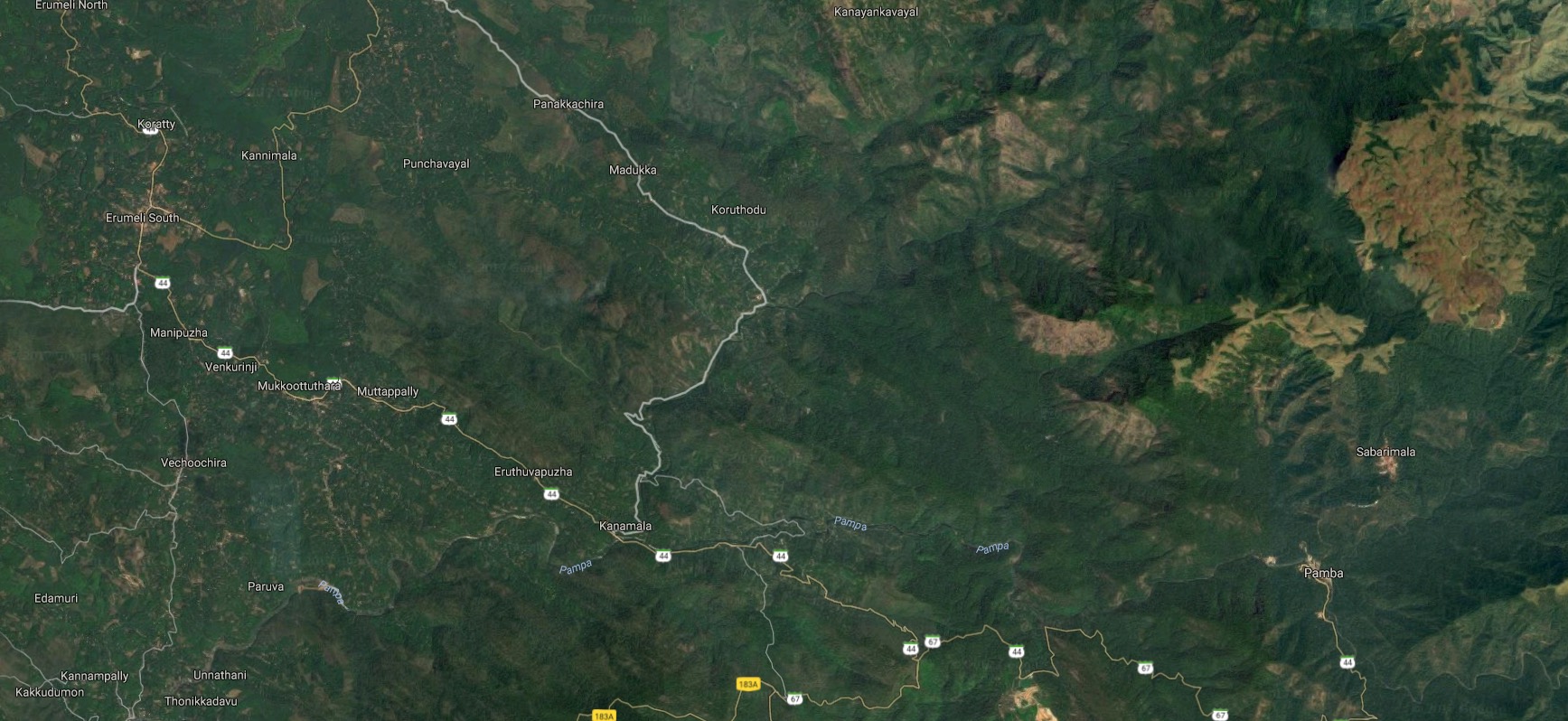
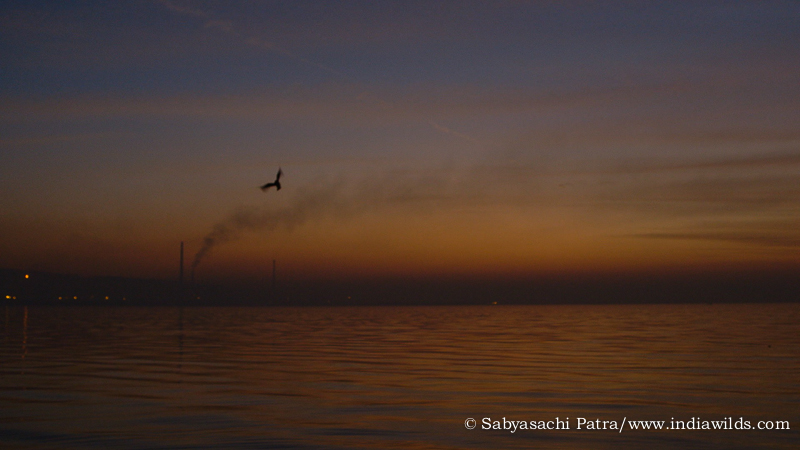


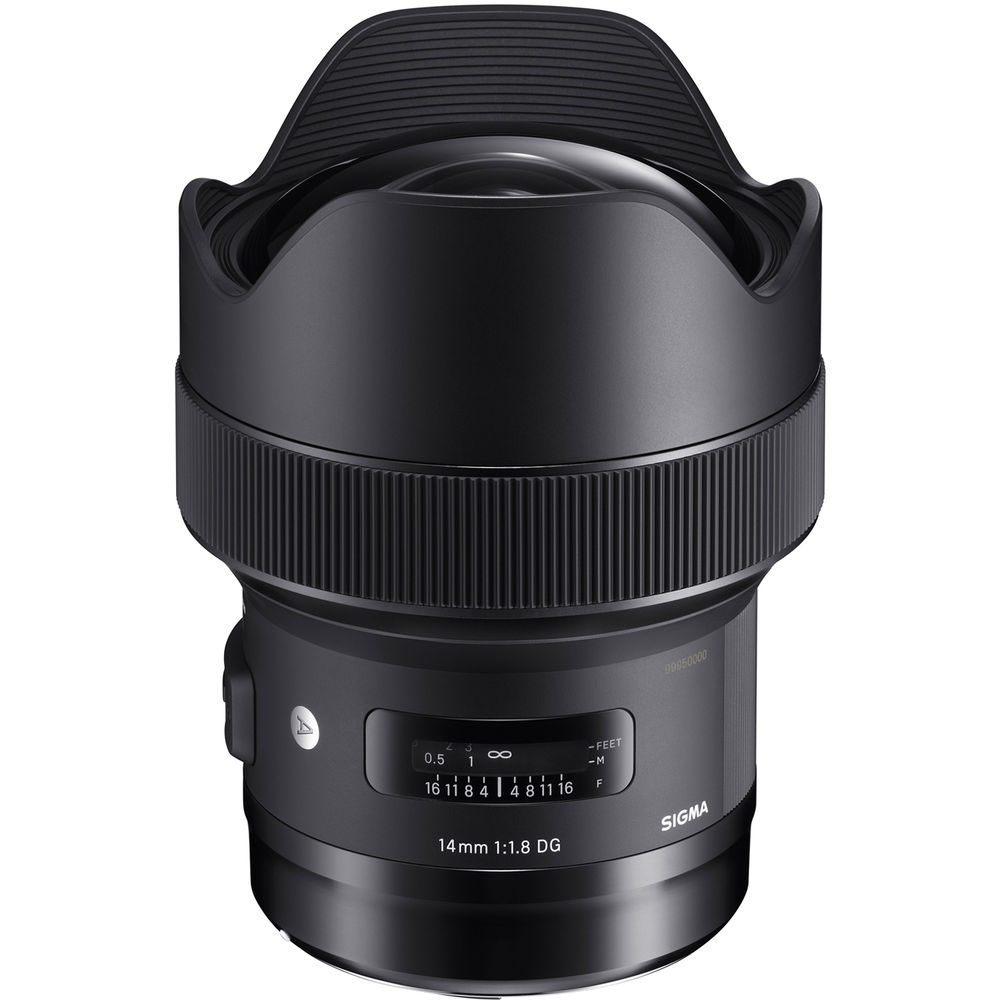


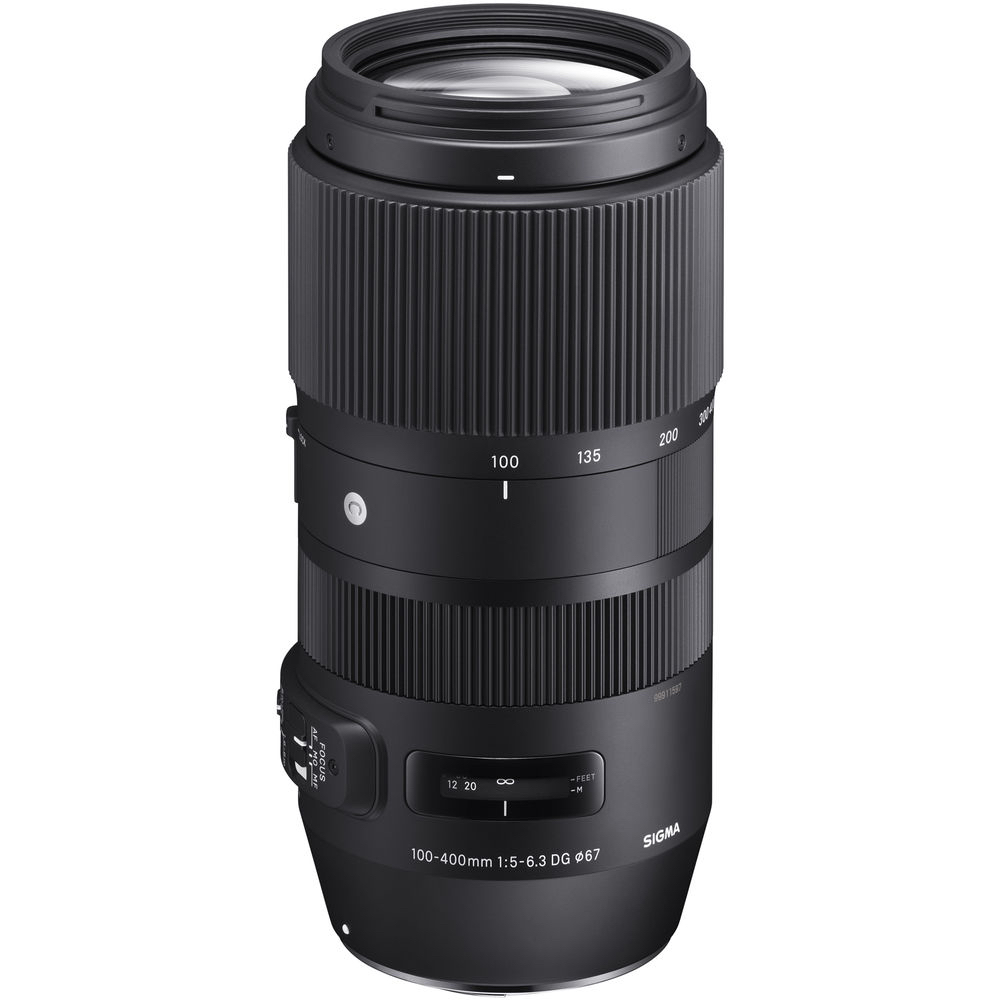
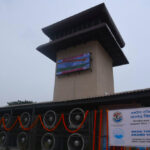



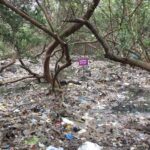


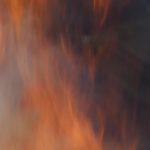
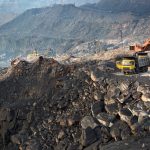




Really disheartening to read about so many whales dying just overnight. Seems like global warming and pollution are to blamed (as you’ve mentioned too)…I wonder what the solution could be?
Hi Sabyasachi! Gone through this edition after you made a mention of it in our silver jubilee group. I must compliment you to have mustered the courage to take up your passion for profession when many of us had taken the beaten path of engineering. Very well written and educative piece of information. By the way I belong to the place of the proposed airport for Sabarimala. Best wishes.